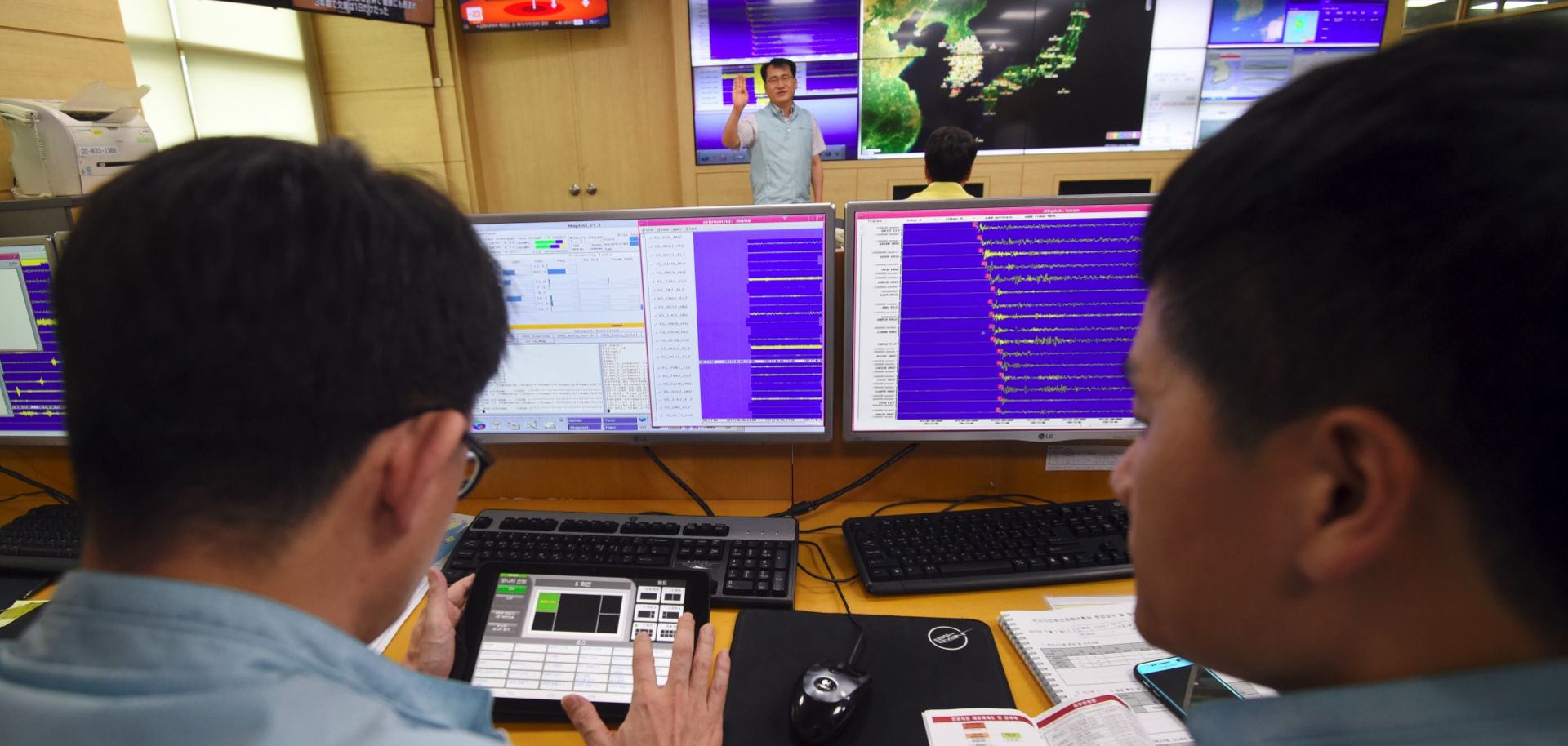North Korea has indeed conducted its sixth nuclear test. The U.S. Geological Service and the China Earthquake Administration recorded a 6.3 magnitude earthquake as a result of the detonation on Sept. 3, followed by a 4.1 magnitude quake due to a suspected cave collapse resulting from the explosion. It's unclear at this time how much radiation and other radionuclide (unstable atoms released with excess nuclear energy) indicators have escaped into the atmosphere, but U.S. and Japanese planes specialized in tracking nuclear radiation are already airborne. Numerous ground-based Comprehensive Nuclear-Test-Ban Treaty monitoring stations are attempting to collect sample data to further assess the test as well.
Thus far, all data points to a much larger explosion than any previous North Korean nuclear test. Based on the magnitude of the explosion, the yield of the device could easily surpass the 100 kiloton-level, underlying the strong possibility that the much more powerful hydrogen bomb...

